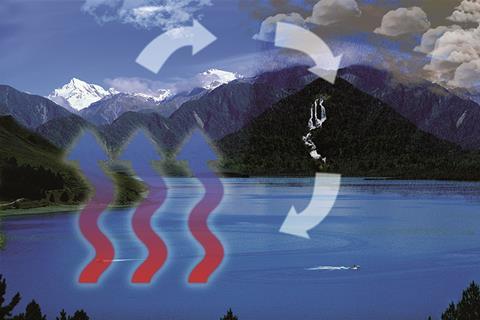Integrate content-based learning into your Primary classroom with this excellent activity on saving water.

Save water!
Level: A1.1, A1.2, A2.1, A2.2
Age: 8–12
Organization: whole class, groups
Aims: To identify ways of saving water in our everyday lives; to design a poster to encourage people to save water; to develop awareness of water as a precious resource; to collaborate with others.
Language focus: imperatives, use, everyday activities and routines
Materials: Essential - poster-size paper or card (one sheet per group), multi-coloured pens
Procedure
1 Briefly talk about the importance of water in relation to your context, eg if there has been a drought recently.
2 Ask the children to identify all the ways we use water in our daily lives, eg to have a bath or shower, to wash our hands, to flush the toilet, to wash our clothes or use the washing machine, to clean the floors or windows, to make a cup of tea or coffee, to do the washing up or use the dishwasher, to water the plants or garden, to boil potatoes, rice, etc.
3 Ask the children if they think it is important to save water and listen to their ideas.
4 Divide the class into groups.
5 Ask them to think of as many ways as they can to save water and to note their ideas. Set a time limit for this, eg five minutes. Give an example to start them off by saying you use 90 litres of water in a bath, but only 30 litres if you have a five-minute shower.
6 Ask the groups to take turns to report back one idea each. Be ready to help them express and formulate their ideas and note the suggestions on the board. Some possible ways to save water are:
– have showers and not baths
– turn the tap off when you clean your teeth
– use a mug of water to rinse your mouth when you clean your teeth
– use rain water only for plants
– use the washing machine or dish washer only when it’s full
– turn the tap off when you do the washing up
– turn off all taps properly so they don’t drip
– use only the water you need when you cook.
7 Count up and review all the children’s ideas.
8 Give out poster-size paper or card and multi-coloured pens to each group. Ask the children to design a poster, including pictures and slogans, to encourage people to save water. Either set a time limit for this, eg 20–30 minutes, or organize the activity so that children make the poster as a mini-project to be done in shorter periods of time, eg after finishing other work, over several lessons.
9 At the end, children can present their posters and water-saving ideas to the rest of the class. You can also encourage children to notice and comment on the features included in each others’ posters which give them impact and make them attractive.
10 The posters can then be displayed either in the classroom or elsewhere in the school.
Comments and suggestions
- As the groups make the poster, it is advisable to get them to draft their slogans in their notebooks before writing them on the poster in final form.
- In order to ensure equal participation of everyone, you may find it best to get the children to work on one or two pictures and slogans individually, which they then stick on their group poster.
- Group posters are particularly suitable for topics or issues which send a message, for example, ways to save energy, ways to save the environment or animals in danger or a poster about safety rules in relation to fire.
This activity idea has been taken from a practical article and series of activity ideas on Content-based learning in the Primary Classroom by Carol Read. To access the article and activities subscribe here.
Credits
Primary Activity Water Young learners content-based learning Environment Imperatives Everyday routines
Teaching tips

A selection of useful and practical hints, tips and tricks, including FAQs on downloading audio and podcasts, and a series of articles by Adrian Tennant covering techniques and strategies for teaching listening.
- 1
- 2
- 3
- 4
- 5
 Currently
reading
Currently
reading
Content-based primary activity
- 7
- 8
- 9
- 10
- 11
- 12
- 13
- 14
- 15






No comments yet